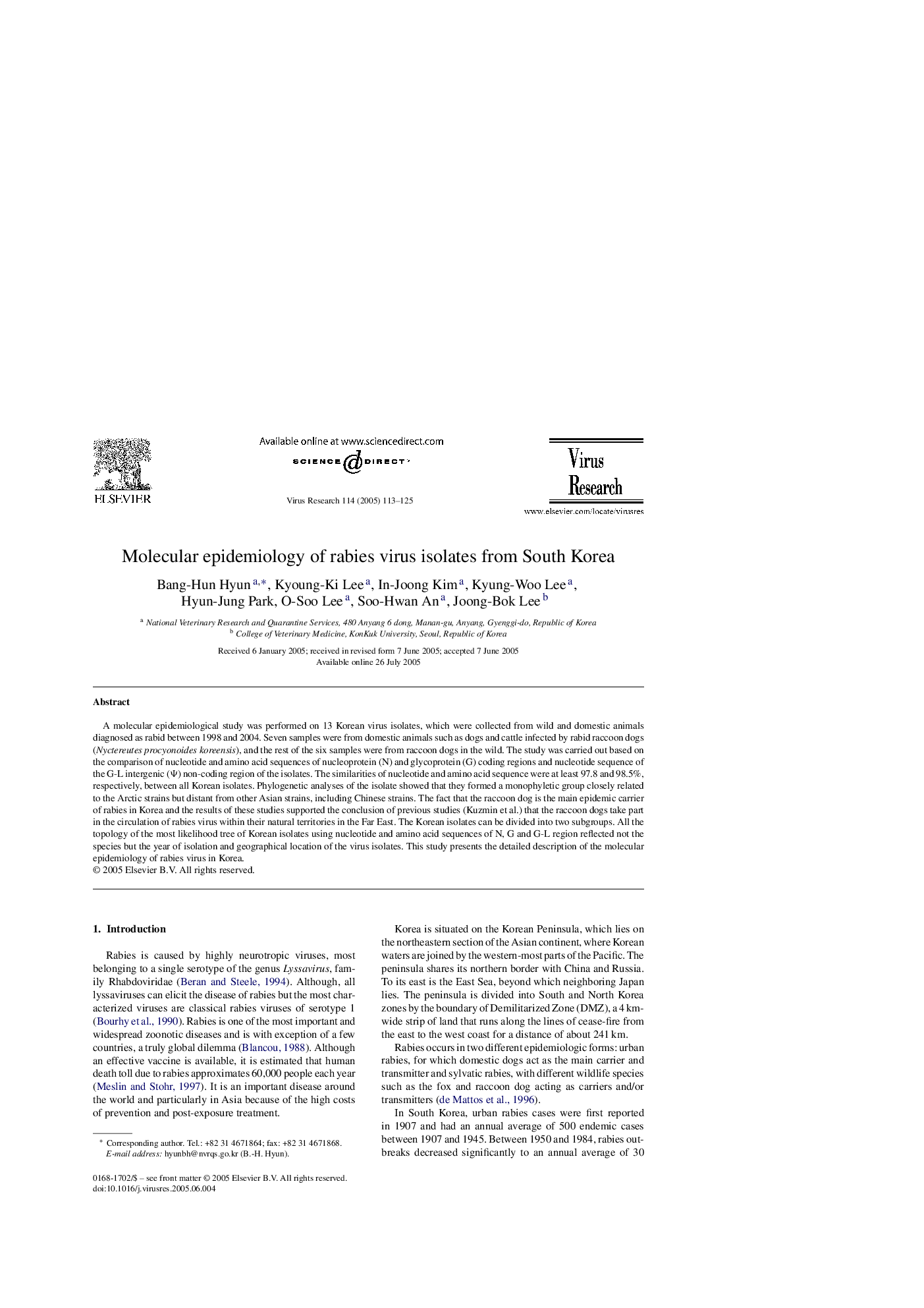| Article ID | Journal | Published Year | Pages | File Type |
|---|---|---|---|---|
| 9289309 | Virus Research | 2005 | 13 Pages |
Abstract
A molecular epidemiological study was performed on 13 Korean virus isolates, which were collected from wild and domestic animals diagnosed as rabid between 1998 and 2004. Seven samples were from domestic animals such as dogs and cattle infected by rabid raccoon dogs (Nyctereutes procyonoides koreensis), and the rest of the six samples were from raccoon dogs in the wild. The study was carried out based on the comparison of nucleotide and amino acid sequences of nucleoprotein (N) and glycoprotein (G) coding regions and nucleotide sequence of the G-L intergenic (Ψ) non-coding region of the isolates. The similarities of nucleotide and amino acid sequence were at least 97.8 and 98.5%, respectively, between all Korean isolates. Phylogenetic analyses of the isolate showed that they formed a monophyletic group closely related to the Arctic strains but distant from other Asian strains, including Chinese strains. The fact that the raccoon dog is the main epidemic carrier of rabies in Korea and the results of these studies supported the conclusion of previous studies (Kuzmin et al.) that the raccoon dogs take part in the circulation of rabies virus within their natural territories in the Far East. The Korean isolates can be divided into two subgroups. All the topology of the most likelihood tree of Korean isolates using nucleotide and amino acid sequences of N, G and G-L region reflected not the species but the year of isolation and geographical location of the virus isolates. This study presents the detailed description of the molecular epidemiology of rabies virus in Korea.
Related Topics
Life Sciences
Immunology and Microbiology
Virology
Authors
Bang-Hun Hyun, Kyoung-Ki Lee, In-Joong Kim, Kyung-Woo Lee, Hyun-Jung Park, O-Soo Lee, Soo-Hwan An, Joong-Bok Lee,
